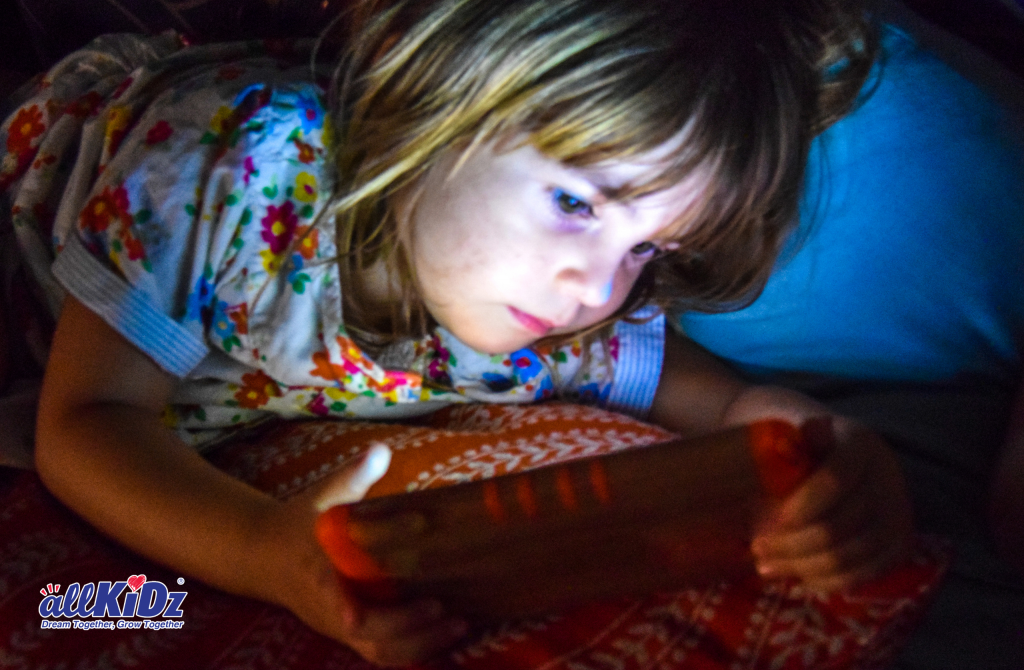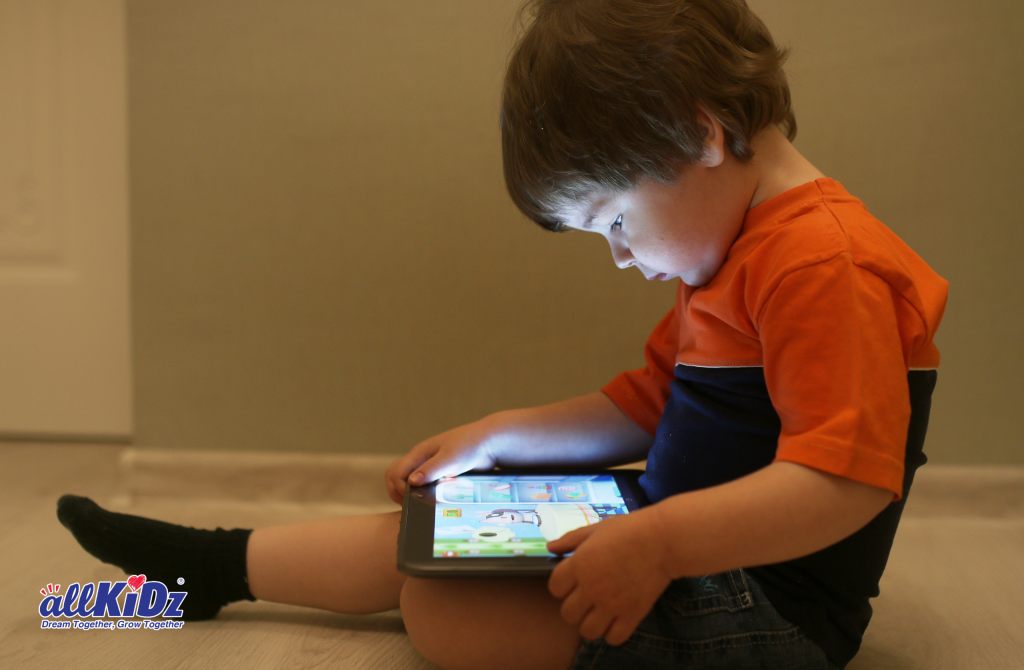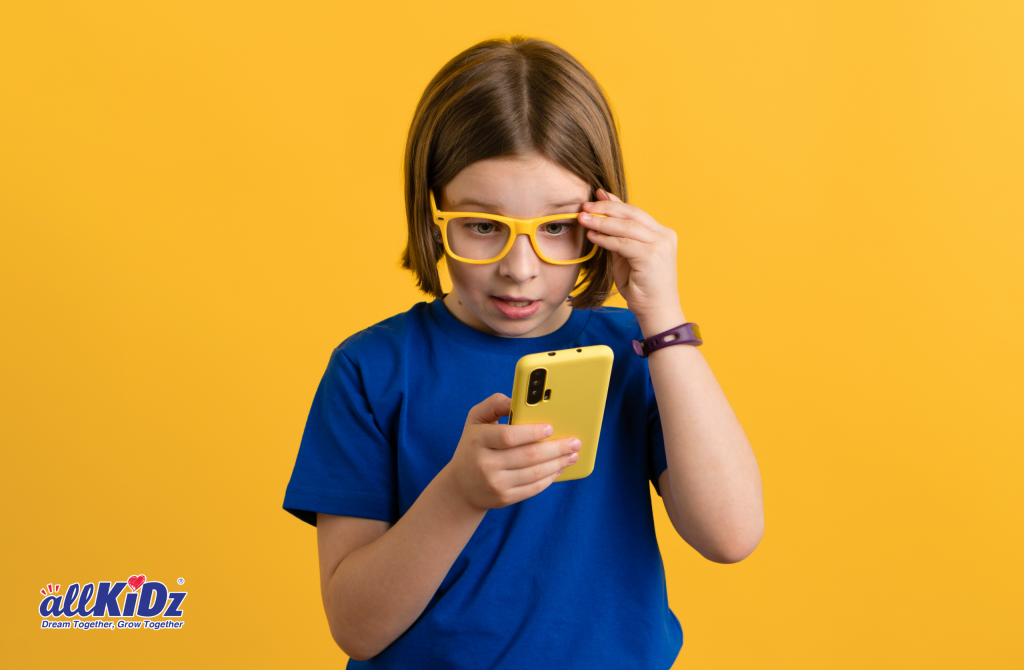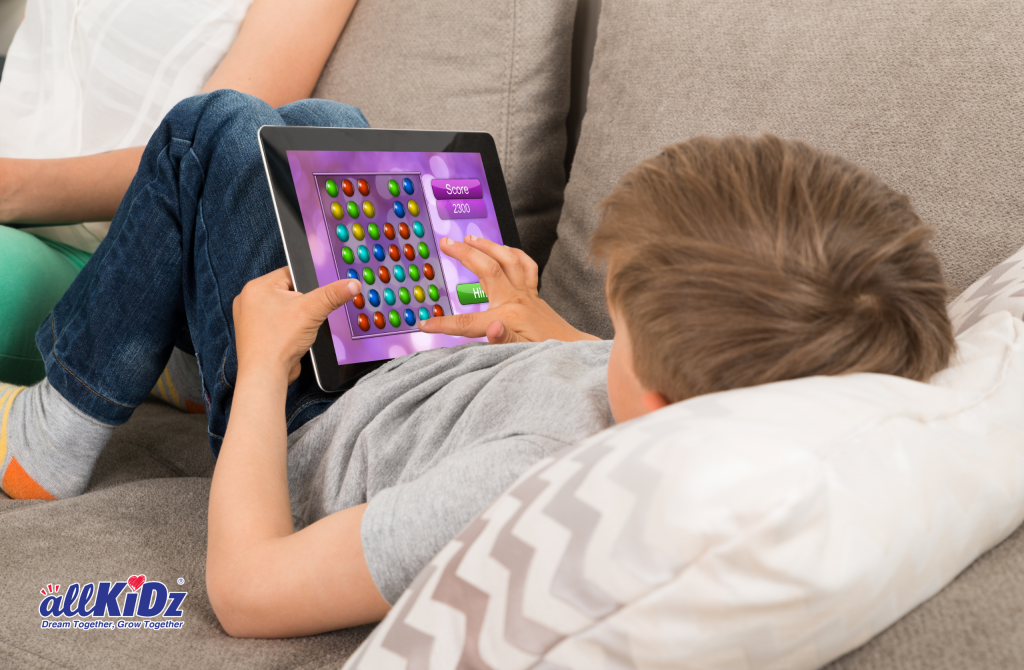Screen Time and Kids’ Health: 5 Surprising Effects on Sleep, Posture, and Obesity Risk
Introduction: Why Parents Should Care About Screen Time and Kids’ Health
Screen time affects kids’ health, and it’s a growing concern for today’s parents. In our digital-first world, screens are a big part of childhood. From virtual learning and educational apps to streaming videos and gaming, children today are more connected than ever. And while eye strain gets a lot of attention (rightfully so), it’s not the only health concern parents should be aware of. The effects of screen time on children leave them more prone to sleep disturbances, difficulty concentrating, and disrupted circadian rhythms, which can impact growth, mood, and overall health.
According to the Canadian 24-Hour Movement Guidelines, kids and teens ages 5 to 17 should aim for no more than 2 hours of recreational screen time per day. Research shows that those who stay within this limit are more likely to report feeling happy, satisfied, and in good mental health. On the other hand, the more screen time increases, the more these positive mental health indicators decrease.
Screen time and kids’ health are concerns that reach far beyond tired eyes. From risk of poor posture to sleep disruption, the health consequences can surprise many parents. Let’s explore five lesser-known ways too much screen time affects kids’ health, in terms of physical, emotional, and cognitive development.
1. Screen Time Messes with Sleep (Even Hours Before Bed)

The Role of Blue Light in Sleep Disruption
Blue light exposure can disrupt melatonin production.
Melatonin is the body’s natural sleep hormone. It begins to rise in the evening to signal that it’s time to wind down. But here’s the problem: the blue light emitted by screens – tablets, phones, TVs, computers – interferes with melatonin production. And it doesn’t just affect the minutes before bed. Screen time messes with sleep in ways we cannot even imagine.
Studies show that even screen use 1 – 2 hours before bedtime can delay the onset of sleep, reduce sleep duration, and make it harder for kids to fall into a deep, restful slumber. Blue light can disrupt sleep and natural rhythms (and this is both bad news for kids and parents, too!).

Why It Matters
Poor sleep isn’t just about being grumpy the next morning. Screen time affects kids’ health, especially in the long-term effects of inadequate rest in children include weakened immunity, mood swings, lower academic performance, and slower physical growth (yes, growth hormone is released during sleep!).
What You Can Do
- Set a “screen curfew” at least 1 – 2 hours before bedtime
- Use blue light filters or glasses in the evening. As an alternative, use dim red lights for night lights.
- Create a calming wind-down routine (reading, warm bath, storytelling, massage)
- Soak up lots of bright light during the day to boost your ability to sleep at night
2. It Increases the Risk of Poor Posture and “Text Neck Syndrome”

Slouching isn’t just a grown-up problem anymore. Next time your child is playing on their tablet, look at their posture. Chances are, they’re hunched forward, shoulders rounded, and head bent down, sometimes for hours. Extended screen use can lead to neck pain, upper back soreness, and shoulder tension, particularly in children whose bodies are still growing and developing.
One lesser-known way screen time affects kids’ health is through Text Neck Syndrome, a condition increasingly observed in children and adolescents. As described in recent research, this syndrome arises from the constant forward bending of the neck while using smartphones, tablets, and other digital devices. This posture places significant stress on the cervical spine, potentially leading to chronic pain, reduced mobility, and even spinal misalignment over time. When combined with extended exposure to blue light, the physical and neurological effects of digital overuse become even more concerning. While screens are an unavoidable part of modern life, awareness and moderation are key to protecting children’s overall health.
Long-Term Risks
- Chronic neck or back pain
- Headaches
- Disrupted spinal alignment as they grow
- Reduced physical activity due to discomfort
Healthy Habits To Try
- Encourage frequent breaks (the 20-20-20 rule: every 20 minutes, look 20 feet away for 20 seconds)
- Provide ergonomic seating
- Instead of handheld devices, opt for bigger screens that are placed in eye level
- Encourage “screen at eye level” setups
- Promote active play to strengthen core muscles
3. It Can Affect Emotional Regulation and Mental Health

Mood swings, anxiety, and screen overload. Clearly, screen time and kids’ health are intertwined.
You’ve probably seen it: a peaceful afternoon turns into a meltdown the minute screen time ends. That’s not just defiance. The effects of screen time on children is neurological.
Overstimulation from fast-paced digital content can make it harder for children to regulate emotions. Too much screen time, especially passive consumption like watching videos or playing hyper-stimulating games, can lead to:
- Increased irritability
- Difficulty focusing
- Higher levels of anxiety or restlessness
- Emotional dysregulation
- The social media layer: For tweens and teens, social media use brings an added layer of comparison, cyberbullying, and validation-seeking. Even younger kids exposed to unrealistic portrayals online may develop body image issues or self-esteem concerns.
4. Screen Time is Linked to Increased Risk of Obesity and Related Health Issues

More screens = less movement
Excessive screen time increases the risk of obesity in children and is strongly linked to a sedentary lifestyle.
Kids who spend hours on screens are simply less likely to engage in physical activity, increasing their risk of childhood obesity. But it doesn’t stop at weight gain.
Too much screen time and poor dietary habits often go hand in hand. Mindless snacking in front of screens, sugary drinks, and lack of movement all contribute to higher rates of:
5. It May Impact Cognitive Development and Attention Span

The developing brain is wired by experience, and unfortunately, when kids’ brains are overstimulated by too much digital exposure, problems can arise. Kids’ brains are incredibly plastic — meaning they’re shaped by their daily activities and environments. According to Lurie Children’s Hospital, early experiences have a powerful influence on cognitive growth. However, when screen time dominates over activities like reading, imaginative play, outdoor exploration, and face-to-face interaction, it can negatively impact screen time attention span kids need for learning, limit creativity, and delay key developmental milestones. Beyond this, screen time affects kids’ health in multiple ways — from posture issues to sleep problems — and even the blue light effects children experience may further disrupt natural brain rhythms and focus.
While some educational apps can be beneficial in moderation, excessive passive screen time can impact:
- Attention span
- Language development
- Memory
- Problem-solving skills
- Creativity
Screen content matters too
Fast-paced or overstimulating content trains the brain to expect constant novelty, which can reduce kids’ ability to focus during slower-paced real-world activities, such as classroom learning or reading a book.
What Helps
- Offer screen-free activities that build executive function (puzzles, art, pretend play)
- Use screens together to spark discussion and interaction
- Prioritize quality over quantity – choose slow-paced, age-appropriate content
- Use timers to limit usage and maintain variety in daily routines
Final Thoughts: Screens Aren’t the Enemy, Balance is KEY

We’re not here to tell you to eliminate screens completely. That’s not realistic (or even necessary). Screens are valuable tools when used intentionally and in moderation.
The key takeaway? More mindful screen habits today can protect your child’s physical, emotional, and cognitive health tomorrow.
Be proactive: model healthy screen behaviors, set reasonable boundaries, and help your child build a well-rounded routine that includes movement, creativity, rest, and real-world interaction.
Because kids don’t just need limits — they need guidance.
Bonus Tip: Don’t Forget Eye Nutrition

Don’t underestimate the role of nutrition in protecting kids’ vision. Nutrients like Lutein act as natural eye defenders, helping to filter harmful blue light and support healthy eyesight. Especially during high screen time periods (like back-to-school season), adding eye-friendly nutrients to your child’s routine can make a big difference. One option is AllKiDz® Lutein Vision Drops, a kid-friendly supplement that helps support eye health from within.
References
Canada. (n.d.). Screen time: Nobody’s perfect, but we can do better. Public Health Agency of Canada. https://www.canada.ca/en/public-health/services/publications/healthy-living/screen-time-nobodys-perfect.html
SickKids Foundation. (2023, June). AKH limited screen time: Children and technology. https://www.sickkidsfoundation.com/aboutus/newsandmedia/stories2023june_akh_limited_screen_time
Canada. (2025). Recreational screen time and mental health in Canadian children and youth. Health Promotion and Chronic Disease Prevention in Canada, 45(7–8). https://www.canada.ca/en/public-health/services/reports-publications/health-promotion-chronic-disease-prevention-canada-research-policy-practice/vol-45-no-7-8-2025/recreational-screen-time-mental-health-canadian-children-youth.html
CBC Radio. (2023). Screen time can affect children’s language development, study suggests. https://www.cbc.ca/radio/quirks/screen-time-can-affect-children-s-language-development-study-suggests-1.7144348#:~:text=But%20a%20new%20study%20shows,adults%20use%20in%20spoken%20language
